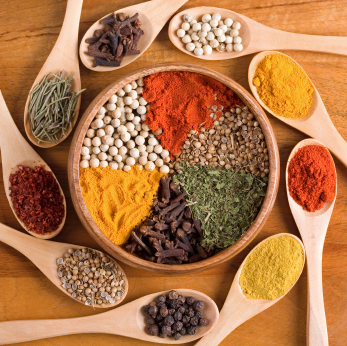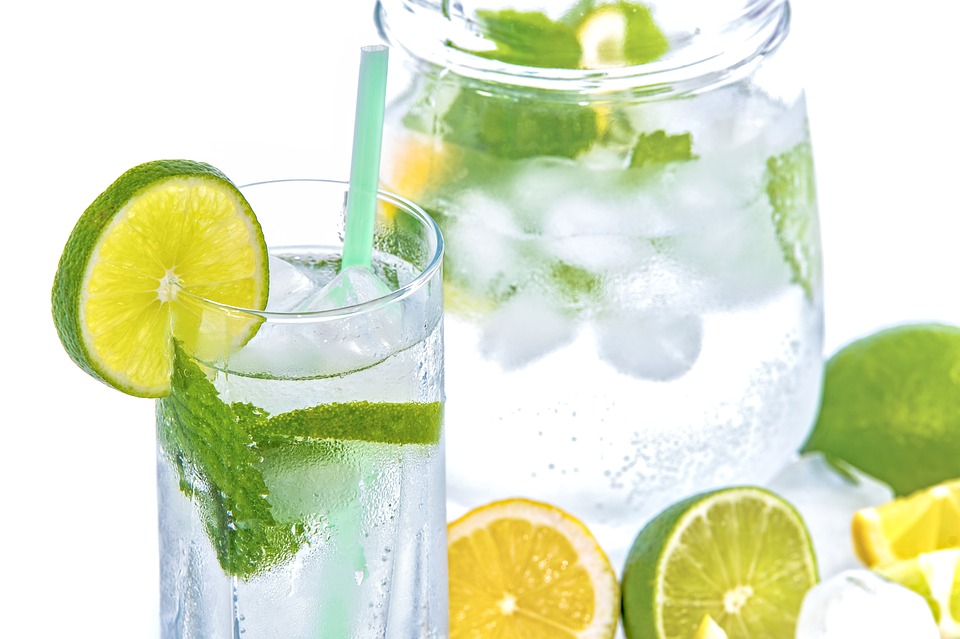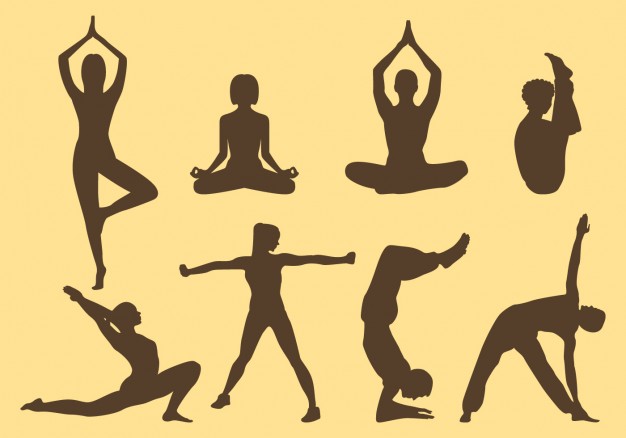
Anger is an emotion that is difficult to react to, understand and most importantly bring under control. And yet, it's one of the most relatable human emotions. It's seldom easy to understand or break down the root cause of anger when it's coming from someone else, let alone control it or tame it when it's stemming from inside you. We often become pretty illogical when we're angry, and end up saying and doing things, which we ordinarily wouldn't.
This often leads to embarrassment and/or acts of passion which lead to frayed relationships. Psychology has a number of behavioural and medical therapies that are administered to people prone to frequent angry and emotional outbursts and hostile behaviours. But no branch of study or science has understood the body and the mind as thoroughly as the ancient Indian practice of Ayurveda. There are hardly any physical or psychological problems that Ayurveda doesn't have answers to.
Ayurveda has suggested practices to calm anger as well and it involves a couple of simple exercises with readily available foods and drinks.According to the book, The Complete Book Of Ayurvedic Home Remedies by Dr. Vasant Lad, anger is caused when the Pitta dosha or the fire energy of the body is aggravated.
He writes, "Pitta is necessary for right understanding and judgement, but when it gets disturbed or out of balance, it creates misunderstanding and wrong judgement, leading to anger and hostility." Dr. Lad has suggested some home remedies to calm the fire energy and bring temper under control.
Here Is An Ayurvedic Diet To Control Anger
Dr. Lad has dedicated an entire chapter in his book to map a 'pitta-pacifying diet', which involves avoiding foods that generate heat in the body, including hot, spicy and fermented foods. He has also suggested avoiding citrus and sour fruits until the pitta has calmed down. He has also advised to consume simple, bland and cooling foods when you're angry and one must also keep away from alcohol and caffeinated foods and drinks during that time. More specifically, he has recommended two drinks for those looking to pacify their pitta.
Herbal Tea: Chamomile Tulsi Rose Tea
To prepare this tea, take one part chamomile, one part tulsi or holy basil and one part rose powder. Steep half a teaspoon of this mixture in a cup of hot water and keep it for some time, until the water cools down. Drinking this tea three times a day can soothe the aggravated pitta.
Pitta Pacifying Drink: Grape Juice Potion With Cumin, Fennel Seeds And Sandalwood
To make this potion, take one cup of grape juice and add half a teaspoon each of cumin or jeera, fennel or saunfand sandalwood powder or chandan to it. This drink, when consumed, might settle angry feelings in the body and also heal any burning sensations in the stomach.
Other than the diet, Dr. Lad also recommends breathing exercises and meditation, as ways of calming the aggravating pitta. These remedies makes sense as the ingredients involved in the food have a cooling effect on the body. So in conclusion, every time you feel angry or upset and want to snap at someone, take a few deep breaths and go make yourself a calming tea!

It is almost time we witness bright sunny days; heat waves are ready to roll in and we can already feel it. Those long leisurely (read: sweaty) days of summer will soon call for sipping on chilled lemonade and binging on everything cool. Along with some of the good things that summer brings, chances of getting sick will increase.
According to Ayurvedacharya Dr. Partap Chauhan, Director Jiva Ayurveda, "Of the 6 seasons described in Vedas, summer or greeshma falls under the Adana Kal, or a period when the sun takes away the cooling properties of the earth and strengthens the Pitta element. Pitta-related problems include fatigue, exhaustion, sunburn, hot flashes, skin problems and diarrhoea."Here are some of the tips to keep from falling sick this summer as suggested by Dr. Chauhan
1.Ayurveda recommends that you should wake up during the Brahma Muhurat and after attending to nature's call, do Surya Namaskara and take a light and fresh breakfast.
2.Stay hydrated throughout the day by drinking water. You can also add a dash of lime and mint in water and drink every day. Make sure you do not drink chilled water as it will make you sick.
3.Consume foods that have more water content. Choose to eat sweet fruits like melons, pears and grapes. Vegetables like cucumber and zucchini and dairy products such as milk and ghee should be present in your diet.
4.Do not forget to add herbs in your diet. Amla, brahmi, neem and gudduchi are known to be the best cooling herbs that will keep the pitta dosha in balance.
5.Avoid sour foods that may include cream and vinegar. Spicy dishes should also be avoided as they can heat up your body causing various health problems, especially digestive issues.
6.Cook with cooling spices like fennel seeds, mint, anise and cardamom. Make sure you add them in your daily diet to keep the pitta dosh in balance.
7.As per Ayurveda, rose water is a magic potion that has innumerable healing powers and cooling effect on the body. You can apply rose water on your skin after being exposed to sun in order to get relief from excessive heat.
Apart from these, taking a 10-15 minute walk at sunrise will help stimulate your mood and body's production of vitamin D. These simple tips will not only keep you from sickness but also help you be summer ready!
Ayurveda, our ancient system of medicine, is a science for life. It provides us with life tools to stay healthy, vibrant and realise our full human potential. Ayurveda firmly believes that good health starts with proper metabolism of food and good robust digestion. It is based on the premise that food, when consumed according to our personal physiological needs, acts like a medicine balancing our metabolism and promoting vitality.Recognising that we are a part of nature, this system describes three basic energies that drive our inner and outer environment- Vata (Wind), Pitta (Fire), and Kapha (Earth). These are present in each one of us in unique proportions, so our dietary needs are also guided by them. Ayurveda does not believe that one size fits all.
1. Eat Food That Nourishes:
Eating fresh is the best. We get the maximum nutrients from seasonal locally grown foods and our bodies are also made to process natural whole foods rather than processed foods. Choose whole grains over refined ones, whole fruits and lots of seasonal vegetables. Go organic for the maximum benefits.
2. Balanced Diet:
A simple formula for this- include the six Ayurvedic tastes or Rasas: sweet, sour, salty, bitter, pungent, and astringent in every meal. It is believed that including all six tastes in every meal will ensure a balanced meal and a feeling of satisfaction preventing snacking and overeating.
3. Load Up On Fruits And Vegetables:
Colour your plate deep blue, purple, red, green, or orange. These are the richest sources of antioxidants and nutrients that help boost immunity. Load up on fruits and vegetables, they are great internal cleansers too.
4. Make Nutrition Bioavailable:
When we eat raw vegetables, the digestive system takes time to work through the layers to reach the core and release nutrients. Eating them cooked means more efficient digestion. Ayurveda recommends that eating sautéed, steamed and cooked vegetables help the digestive process. If you want to eat salads, then lunch is the time to do so.
5. Spice Up:
Spices are an integral part of our daily meals. They add to the taste but very few realise that spices add to a meals' nutritional value too. They enhance digestion, promoting absorption of nutrients to the maximum. Spices also add to the Ayurvedic principle of including all the rasas in a meal.
6. Cleanse Out:
Ayurveda staunchly believes that when our digestive energy- Agni is robust, we are in a state of balance and health. However, if our digestion is not good we build up Ama- an accumulation of digestive toxins. To avoid this, we must eat away from our computer or TV, in a peaceful atmosphere. Food is eaten when you are actually hungry, let the body set the time. Eat at a moderate pace, neither gulping nor too slowly. Ayurveda also recommends a complete cleanse in every change of season, especially at the start of spring.
7. Drink Up Water:
The key is to keep yourself hydrated and energised with water, preferably warm to flush out the toxin. Ice cold water is a bad idea, cool or room temperature is healthy. The caffeine, aerated sodas and alcohols are not really the vitality boosting drinks! Go easy.
Tips
1. Total health come from a healthy mind in a healthy body. Emotional wellbeing is enhanced with eating in a happy atmosphere. Eating with your family/friends adds to your meals' nourishment. Adding variety to your meals by trying a new flavour, ingredient or a cuisine is always a good way to enjoy food. Eating should be fun not a task to be done.
2. The good habits that add health to your years according to Ayurveda include eating three balanced meals at the same time daily. Lunch should be the heaviest meal and dinner lightest and about 3 hours prior to your bedtime. Some form of moderate exercise daily is a must as is meditation. Sitting quietly during and after a meal are recommended.
Ayurveda says we metabolize with all our five senses. Everything we experience through our sense of touch, sight, taste and smell becomes a part of us. Let's consciously choose better for a life full of health and happiness.

It is summertime, and all we need to do is to fodder ourselves with cooling and hydrating drinks. While Ayurveda condemns the consumption of ice-cold foods and beverages as they disrupt the digestive fire called agni. It does encourage loading up on drinks that lowers the body temperature and not hamper the digestive system. This weak digestive system begins to work harder in order to digest and absorb nutrients and pitta dosha or the metabolism becomes unbalanced. One of the best ways to cool your body temperature is to drink lots of water that also helps keep it hydrated in sweltering summers. There are other drinks that Ayurveda suggests to include in your daily diet.Here are some amazing drinks suggested by Ayurveda expert at Nirog Street, Ram N Kumar that you should definitely load up on.
1. Aam Ka Panna
Aam ka panna is made using green mangoes. It is one of the best cooling drinks that help beat the heat. It has vital micro-nutrients that replenish the mineral levels in the body and keep it going through the hot days. Here's how you can make aam ka panna at home.
2. Poppy Seed Sorbet Or Khus Sherbet
Mixing poppy seed sherbet with lemon makes for an amazing drink during summers. It is an excellent source of iron, manganese and B6 vitamins. It is also diuretic in nature, which is why it is known for its cooling properties. Here's how you can make khus ka sherbet at home.
3. Bael Ka Sherbet
Wood apple, or bael juice makes for a cooling agent. The juice of the fruit is considered to be beneficial for gastrointestinal problems, peptic ulcer, jaundice, obesity and gynaecological disorders. You can add some lemon juice to avoid the bitter after-taste, too.
4. Rose Sherbet (Gulab)
Rose sherbet or rose water contains various vitamins like vitamin A, C, E and B. It also makes for a hydrating and cooling drink that relieves digestive problems too. Here's how you can make rose water at home and drink this healing elixir.
5. Phalsa Sherbet
Phalsa fruits are small berries that grow on the tree Grewia asiatica and resemble blackcurrants. Phalsa sherbet is said to relieve you from excessive heat. A glass of it daily may help prevent strokes. Here's how you can make Phalse ka sherbet at home.
6. Sattu
This desi drink originated from Bihar is known for its cooling properties. Sattu powder is made with roasted black chanas, which is then used to make the drink. It is super filling and healthy; thanks to the presence of essential nutrients, fibre and proteins that make it a summer cooler. Here's how you can make sattu at home.
7. Buttermilk
Ayurveda suggests bringing buttermilk, or chaas, to rescue during summers. One of the most loved summer drinks, buttermilk is an outcome of the separation of butter from milk tempered with curry leaves and mustard seeds. This all-rounder is surely a perfect solution to your summer woes. Here are 10 best buttermilk recipes you must try making at home.
Adding these cooling drinks will surely ensure a delightful and hydrating summer this year!
At some point of time in our lives, we have all felt low and depressed. We have often questioned who we really are and whether we are good enough or not. It is very natural to be happy at some point in time and sad at the next. However, the concern arises when these changes in your mood persist for a fairly long period of time and interfere with your daily life.
An individual with depression often finds himself spending long hours isolated from family, friends and others who matter. Disturbed sleep patterns, changes in eating habits and excessive mood swings are some of the characteristic symptoms of depression.
While there is medical help available to enable one to tackle with depression, another means of bringing in positivity is yoga. According to a study done by Boston University School of Medicine in the US, joining yoga classes can help patients experience significant reduction in symptoms without the side effects associated with antidepressants. The power of yoga has cured innumerable health problems since time immemorial. With depression too, yoga comes to the rescue of individuals. Often known to improve physical health, yoga works wonders in the case of your mental health and well-being as well. It is a natural and simple way of helping you overcome fears and improving self-esteem and self-worth.
"This study supports the use of yoga and coherent breathing intervention in major depressive disorder in people who are not on antidepressants and in those who have been on a stable dose of antidepressants and have not achieved a resolution of their symptoms," explained corresponding author Chris Streeter, Associate Professor at the University. The findings, published in the Journal of Alternative and Complementary Medicine, provide support for the use of yoga-based interventions as an alternative or supplement to pharmacologic treatments for depression
Yoga is believed to relax the mind and lower the heart rate thus reducing anxiety, which comes along with depression. It is built on the philosophy of helping one live in the moment, mitigating negative thoughts and focusing on all good things that life sends our way.
Lamya Arsiwala, The Yoga House Mumbai, suggests several yoga Asanas that could be practiced to enhance one’s state of mind in case of depression.
1. Baddha Konasana (Butterfly/ Bound Angle Posture)
It is often referred to as the “Cobbler pose”, named after the position cobblers sit in while working. The asana helps strengthen the thighs, knees, hips and the back. It is a great anti-depressant pose and improves emotional stability.
How to do: Sit with an upright back, knees bent and holding your feet tightly together. Deeply inhale and flap your bent legs up and down like a butterfly.
2. Supta Baddha Konasana (Supported Bound Angle Posture)
Supta means reclining. It is often referred to as the “reclined cobbler pose”. This asana helps one become calm and instills a sense of relaxation.
How to do: Lie down straight on the ground with bent knees on either side of the body. Join your feet and bring the heels closer to your groin. Place your palms next to your hips, facing downwards. Slowly exhale and inhale.
3. Ananda Balasana (Happy Baby Pose)This asana relieves fatigue and relaxes the mind. Since it is called the baby pose, the individual practicing the asana really feels the happiness of a baby in that moment.
How to do: Lie down on your back, bringing your knees closer to your stomach. Inhale and hold your feet with your hands. If you have difficulty holding your feet then hold on to your ankles in the beginning and progress towards heel as you continue to do the pose daily. Breathe gently and rock from one side to the other if you feel comfortable.
4. Setu Bandhasana (Bridge Pose)
It is a great asana for reducing stress and anxiety. It takes the shape of a bridge and hence the name. It also helps maintain normal blood pressure.
How to do: Lie flat on the ground, face up and hands on either side. Slowly lift your hips upwards while inhaling. Bring it back down and repeat.
5. Child's Pose
An extremely soothing posture, the child's pose helps achieve peace and is a great relaxation technique.
How to do: Sit on your knees. Slowly exhale and bring your torso down between your thighs. Place your hands on the floor alongside your torso and release the fronts of your shoulders toward the floor
Practicing these asanas on a regular basis will help overcome depression and improve mental health and well-being tremendously.










